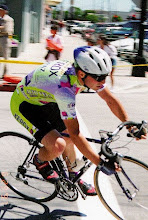SSCW is in the logbooks, and here's how I did:
Callsign Used : KM6I
Operator(s) : KM6I
Station: KM6I
Class: SO Unlimited LP
Name : Gordon Good
City/State/Zip : Mountain View CA 94040
ARRL Section : SCV
Club/Team : Northern California Contest Club
Software : N1MM Logger V9.10.3
Band QSOs Pts Sec
3.5 133 266 26
7 189 378 49
14 250 500 3
21 52 104 2
Total 624 1248 80
Score : 99,840 (yes, I missed 100k by one lousy Q)
Rig : K3 barefoot, WinKeyer
Tïme: 22 hours
Antennas : G5RV inverted vee at 60 feet, 2-el triband wire yagi at 35 feet
My goal for the two SS weekends this year is to beat my CW score from my first SS in 1978 (303 Qs, 57 Mults, 34,428 points), and make KB-500 between the two weekends. I actually reached both goals this weekend
My wife gave me the whole day off Sunday, so my plan was to get the kids to bed
on Saturday, then operate from 0500Z until the end of the contest for a total of 22 hours of BIC. I wasn't sure how motivated I'd stay, as I recall getting pretty tired at some of the W8UM multi-op SS efforts in the 1980s, but it turned out to not be a problem. After 300, I got motivated to hit 400, 500, and then 600.
I was also surprised to find that by the time I came off the low bands and went to 20m for the first time at 1400Z, I already had 75 mults. I guess 40 and 80 were pretty good! I hadn't given any thought to trying for a sweep, but once I was that close, I started paying more attention to the red in the bandmap.
The "secret weapon" for me this year was a homebrew 2-element triband wire yagi, fixed at 70 degrees. I found the design in a back issue of QST (link:
http://www.arrl.org/tis/info/pdf/0111035.pdf). The thing worked great -
east coast stations were 1 or 2 S-units louder on receive, and I felt loud - often I'd come out on top when several stations were calling. I was able to work MAR with just a few calls (I did wait for the pileups to calm down a bit before I tried, though).
Here's a better picture of the wire yagi:

And this was my first contest with my new K3. It held up well. It got a good workout too, as my neighbor W6XX (5,000 feet east of me) was on and was 60 dB over S9. I was able to work stations a few kHz away from his run frequency - it wasn't easy, and I knew he was there, but I could do it. I also just love the K3's QSK, and the single knob for controlling both the DSP filter width and roofing filter selection. Get the station dialed in and twist the knob to the left until the QRM goes away.
I found that I was able to find a run frequency on the upper edge of the band and run for a while, but after 10 or 20 QSOs, things would dry up. I never got spotted on the cluster, but that's probably because I was up so high in the band and didn't hang around long enough.
Another strategy I used was to "bandmap surf" a few spots I hadn't yet worked. By that I mean I'd click on unworked spots up and down the map until I found one just about to finish a contact. It was more time-efficient than clicking on one and waiting for the current exchange to finish. I did tune and spot stations as well, however.
And my plans to use the K3's subreceiver to do SO2V S&P didn't come to fruition. I'd practiced the mechanics of switching from the run to the S&P frequency and logging the contacts, but I wasn't prepared for the aural onslaught that is a contest. I just lost all confidence in being able to pull it off, so I turned off the KRX3 and only used it when a rare mult went split. Maybe next time...
It was also nice to finally work Scot, KA3DRR in a contest, and to run into my W8UM acquaintance Steve, K8QKY, running stations on 20. I was looking forward to, but missed working Tim, KT8K.



